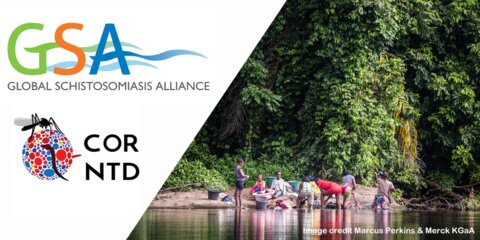Decision making in schistosomiasis: Biological thresholds & acceptable risk in the implementation of schistosomiasis control strategies.

COR NTD and the Global Schistosomiasis Alliance (GSA) are pleased to announce a pre-meeting session: "Decision making in schistosomiasis: Biological thresholds & acceptable risk in the implementation of schistosomiasis control strategies."
Date: 23rd October 2020
Time: 14.00 – 17.00 BST London / 9.00 – 12.00 EST / 6.00 – 9.00 PST / 16:00 – 19:00 EAT / 13:00 – 16:00 GMT
Research Question to be Addressed: Current mapping, M&E and treatment guidance for schistosomiasis programs was established in the late 90s based on the tools and economic limitations of the time. Two decades later, improved tools and empirical evidence trigger the critical need for a new strategy and framework for decision making.
Session Aim:
In 2002, WHO published the first edition of Helminth Control in School-Age Children: A guide for managers of control programmes. This manual built on previous work published in the late 1990s and laid out the mapping, M&E, and treatment strategies for both schistosomiasis and soil transmitted helminthiasis that are still in use today. The recommendations in the manual were established using the available diagnostic tools (urine filtration and Kato Katz techniques for egg detection and blood in urine questionnaire and haemastix for haematuria), evidence (heavy infections cause schistosomiasis related morbidity, with moderate and light infections being less important) and grounded in the economic realities of the time (limited availability of funds, lack of drug donation) and thus opted for a more affordable approach.
Over the past twenty years, as resources and medicines became more readily available, this guidance has been used to scale up treatments worldwide from fewer than 20 million people treated in 2009 to nearly 100 million treated in 2019. As a result, the global situation has changed considerably, not only in terms of available tools and resources, but also in terms of the epidemiological profile of endemic countries – many of which that have undergone years of treatment.
The thresholds and indicators for schistosomiasis are focused on prevalence and intensity of egg positive children as a proxy indicator for the risk of morbidity. Over the past two decades, significant scientific and programmatic progress suggest that the effects of the disease are more nuanced than previously understood and the current indicators are no longer sufficient to meet programmatic needs.
This session will focus on establishing an evidence-based framework for monitoring and evaluation of schistosomiasis programs using currently available data and knowledge. Several of the questions to be addressed are:
- What are the appropriate biological thresholds for measuring morbidity and transmission?
- How would these thresholds be measured?
- Is a single measure appropriate for all species or are species-specific measures needed?
- How might environmental, ecological and epidemiological determinants of transmission (such as those particular to the African Great Lakes, dry savannah conditions and seasonal transmission or humid annual transmission) inform M&E strategies?
- What would be appropriate programmatic decisions and interventions when thresholds have been reached?
Upon establishing an M&E framework for schistosomiasis, to reach targets of elimination as a public health problem and interruption of transmission, programs will be able to optimize and measure impact and will have a clearer strategy for where integration with the WASH sector, other NTDs and the health system is feasible.
The session will begin with 5 presentations before splitting participants into focused breakout groups to discuss and deliver OR priorities.
Agenda:
Part 1 Talks (60 mins):
- A threshold for elimination as a public health problem for schistosomiasis – Ryan Weigand (CDC)
- Critical factors which inform a threshold for schistosomiasis – Penelope Vounatsou (SwissTPH)
- How do we identify that we have reached a/the threshold – Rachel Pullan (LSHTM)
- What do we do once we have reached the threshold – Jaspreet Toor (Imperial College London)
- The critical need for a SCH M&E Framework – Fiona Fleming (SCIF)
Part 2 Parallel break-out discussions (60 mins):
- Group A – Morbidity, infection and diagnostics to determine specific and measurable targets
- Group B – Oversampling survey design to inform programmatically feasible surveys to determine interventions
- Group C – Development of an M&E Framework to support programmatic decision-making